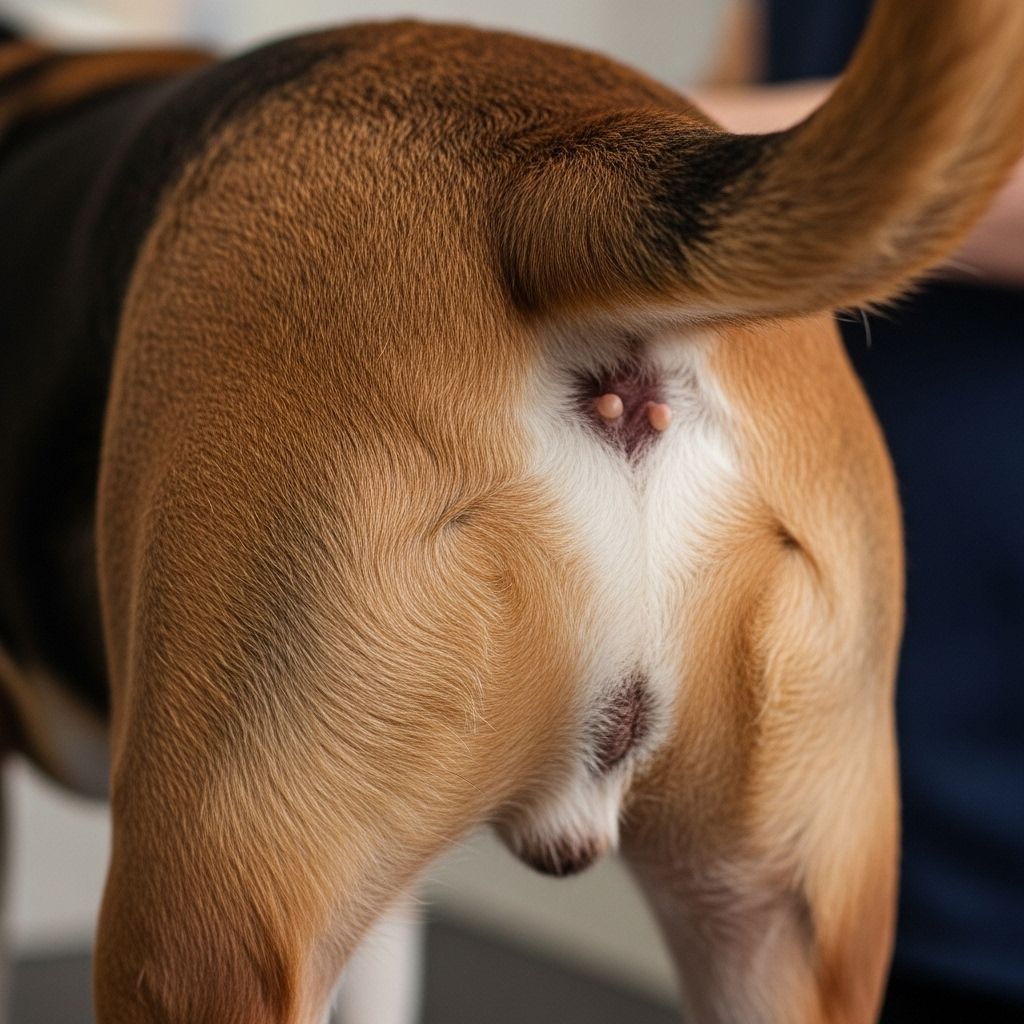Dog Anal Glands: Causes, Treatment And Nutrition
Comprehensive Guide to Dog Anal Gland Health and Management

Image: HearthJunction Design Team
Introduction to Dog Anal Glands
Dog anal glands, also known as anal sacs, are small scent-secreting sacs located on either side of a dog’s anus. These glands produce a distinctive-smelling fluid that serves several purposes, including lubricating the anal canal during defecation and marking territory for social interaction and communication.
Functions of Anal Glands in Dogs
Anal glands have two primary functions:
- Lubrication: They secrete mucus that helps reduce friction during bowel movements, preventing potential mucosal injury.
- Scent Marking: The glands release a unique scent that helps dogs mark their territory and engage in social communication.
Common Issues with Dog Anal Glands
Some dogs may experience issues with their anal glands, including impaction, infection, or abscesses. These problems often manifest as discomfort, excessive licking or biting around the anus, or a foul odor.
Causes of Anal Gland Issues
Several factors can contribute to anal gland problems:
- Impaction: When the glands fail to empty properly, leading to a buildup of fluid.
- Infection: Bacterial infections can occur if the glands become impacted or abscessed.
- Diet: A diet lacking sufficient fiber may lead to harder stools, which can cause difficulty in expressing the glands naturally during defecation.
Diagnosis and Treatment of Anal Gland Issues
Diagnosis typically involves a veterinary examination and may require imaging studies to assess the condition of the glands. Treatment options include manual expression of the glands, antibiotics for infections, and in severe cases, surgical intervention.
Expressing Dog Anal Glands
Anal gland expression is a procedure to manually relieve the glands by squeezing out their contents. This is often performed by veterinarians or trained pet groomers. The process involves:
- Positioning the dog to allow easy access to the anus.
- Applying gentle pressure to the glands at the 4 and 8 o’clock positions around the anus.
- Releasing the contents of the glands.
- Cleaning the area to prevent infection.
Nutritional Impacts on Anal Gland Health
Diet plays a crucial role in maintaining healthy anal glands. Foods high in fiber can help soften stools, making it easier for dogs to naturally express their anal glands during bowel movements. A balanced diet rich in essential nutrients is vital for overall health and well-being.
Frequently Asked Questions
Q: Why do my dog’s anal glands smell?
A: The anal glands produce a distinctive, foul-smelling fluid that can become more noticeable if the glands are impacted or infected.
Q: How often should I have my dog’s anal glands expressed?
A: This varies depending on the dog’s individual needs. Some dogs may require regular expression, while others may not need it at all if they naturally express their glands during defecation.
Q: Can I express my dog’s anal glands myself?
A: While it is possible, it is generally recommended to have a veterinarian or trained pet groomer perform the procedure to avoid causing discomfort or injury to the dog.
References
- https://www.glandex.com/pages/anal-gland-information
- https://animals.howstuffworks.com/pets/dog-anal-glands.htm
- https://warrenhousevets.com/its-all-about-those-anal-glands/
- https://www.imaios.com/en/vet-anatomy/anatomical-structures/anal-glands-11090543944
- https://www.bonza.dog/2024/04/anal-glands-in-dogs-guide-to-best-anal-gland-health/
Read full bio of Srija Burman












